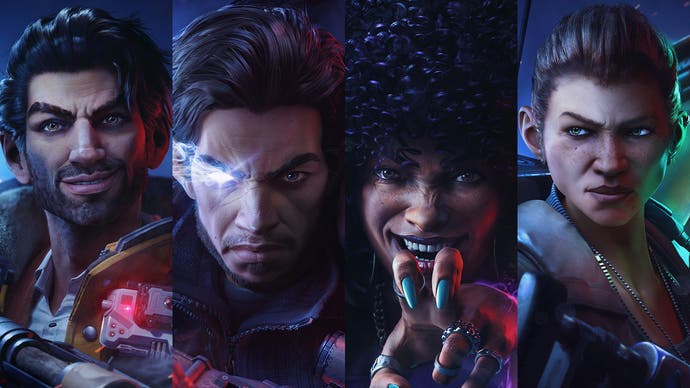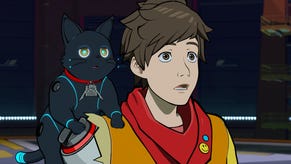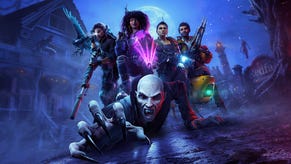Redfall's 60fps patch works - but this isn't the redemption story we were hoping for
Genuine improvement in many areas, but many issues persist.
Redfall was a key 2023 Microsoft exclusive that didn't land especially well with players or critics. Many aspects of the title were controversial, from the sparsely populated open world to the relatively basic quest design, but the title's performance was perhaps the most obvious missed target. All preview materials for Redfall showcased 60fps gameplay, with relatively unambitious visuals, and yet the final game targeted 30fps on consoles, with occasional frame-rate issues and stutters as well. A 60fps performance mode was promised and five months later, it has finally arrived, but how well does it work, and what the rest of the game's issues?
Before we dive into the new performance mode, I wanted to go over some of the more glaring issues that Redfall presented at launch. The title didn't exactly ship in tip-top shape, with obvious graphical problems that probably should have been addressed before the game arrived. Perhaps the worst issue was the game's problems with texture loading. Essentially, Redfall had issues loading in high-resolution textures, which was most obvious with decal type textures. The high-resolution asset would eventually load in, but until then you'd be presented with a texture with fidelity straight out of a PS2-era title. It looked like the lowest texture LOD was being rendered in-game, and the proper high-resolution variant would take a long time to emerge - sometimes as long as 18 seconds, based on our testing.
This has now been completely fixed, as far as I can tell. These decal textures now load in with a very high-resolution asset at a relatively far distance from the player, so you're never exposed to these low-res textures at close range. To be clear, this was almost certainly not intended behaviour in the first place, but whatever bug was creating this problem has now been fixed. Crosswalk markings, graffiti, and painted illustrations all render without any issues whatsoever. However, some of the game's textures are still a touch low-resolution even in their highest-quality LOD, just like the launch version of the game, so some asset issues still remain.
Redfall also hit some snags with shadow quality. At a distance, shadows looked OK, but when you approached them they looked very odd, constantly flickering and aliasing, and because the game had a dynamic time of day system with shadowmaps updating their position every single frame, the shadows looked awful even when the camera position was kept static.
As of version 1.2, this has been comprehensively fixed. There is still some shadow aliasing at close range, but the shadows remain quite coherent and are very detailed. It looks like Arkane has increased the resolution of the shadow cascade close to the player significantly, such that the shadowmaps blend in well with the rest of the game's visuals. The new shadows aren't exceptional by any means - there's no simulation of variable penumbra or sharp close-range detail, like you see with virtual shadowmaps in some games - but Redfall is now basically on par with expectations for a modern title.
Redfall suffered from some lighting oddities in its initial release. The game had issues with shadow pop-in, which could occur at uncomfortably close range, and occasionally featured very odd-looking lighting setups that didn't really correspond with reality. Unfortunately, these issues are mostly still present in the updated version and there are further issues, as you can see in the video. It also highlights some of the problems that remain with the game's lighting, such as dim-looking light sources that seemingly cast light as bright as the sun, again accompanied by pop-in. Five months on, Redfall is still littered with bizarre lighting issues and bugs.
Finally, other launch-era critiques of the game's visuals and production values still apply to version 1.2. Outside of the changes I explained above, the game looks about the same as it did back in May, for better and for worse. The game's visuals certainly have a bit of a last-gen quality to them, especially indoors, and the storyboard-style cutscenes and robotic dialogue scenes showcase questionable production values. Redfall is a competent enough effort with its various post-release tweaks and fixes, but it's not hardly up there with the bleeding edge of real-time rendering.
With that out of the way, let's break down Redfall's various visual options on current-gen consoles. Both Series consoles receive quality and performance modea, targeting 30fps and 60fps respectively. Curiously, frame-rate apart, there's very little difference between the two options on Series X. All basic visual settings are more or less a match, including performance-sapping settings like shadow resolution, foliage density, and draw distance. They look remarkably similar at a glance.
They also look very similar even when you zoom in closely, because both modes resolve a good-looking 4K image. You do see a bit more image breakup in the performance mode, but there's a clear, high detail 4K image in both that maximizes the pixel grid of an ultra HD display. The key here is upsampling: the performance mode renders at 1080p, with some form of upsampling taking it to an effective 3840x2160 resolution, while the quality mode continues to render at a full 4K, but both project a convincing enough 4K image. When we bring in the PC version and compare it to the Series X performance mode, the aliasing patterns at similar internal resolutions using FSR 2 closely resemble the Series X code, so I suspect that FSR 2 is the upsampling solution of choice here.
>>On Xbox Series S, there are a range of cutbacks here relative to the Series X code, some carried over from version 1.0 and some tweaked since that release. The shadows now enjoy the new high-res close-range shadow cascade, for instance, and closely resemble the Series X in resolution at close range. However, the shadows transition to a lower-res cascade closer to the camera than Series X, and exhibit much worse pop-in at range, which sometimes looks a bit off-putting.
Foliage is thinned out too, though it's not hugely impactful. Meanwhile, volumetric lighting is of a lower resolution, while textures are visibly poorer than the Series X equivalents, with comically poor results on certain objects. One welcome - and unexpected - change is that the Series S version now enjoys screen-space reflections, just like Series X, which were absent from version 1.0 on Series S.
The two Series S modes are a near-perfect match for each other in terms of visual settings, just like on Series X. There's really nothing to separate them when we stack them up side-by-side. Resolution is about 972p in the game's quality mode, with the performance mode rendering at 720p, again likely using FSR 2 to take it to 1440p or thereabouts. The performance mode has more image breakup but is otherwise a match in terms of image quality, and both modes produce a credible 1440p-class image at a reasonable distance.
>>Performance in the updated version of Redfall is mostly quite good, with some caveats. The quality mode on both consoles now operates at a locked 30fps, with no frame-rate issues as far as I can tell. It's a big improvement from the launch release, which suffered from frame-time hiccups during open-world traversal, and could exhibit some issues with a screen full of alpha. Even though it might not seem impressive at first glance, Redfall has clearly seen some CPU optimisation work, which produces a very stable experience. This applies to both single-player and co-op gameplay. Backers of the DF Supporter Program helped me in getting some multiplayer footage as remarkably, Redfall doesn't actually have any matchmaking capabilities whatsoever.
The performance modes actually manage to hit 60fps quite consistently. Most of the time, you're getting a flat 60fps readout, with no fluctuations at all. Traversal stutter does reappear, though in less pronounced form than on the launch release. Usually there's a short pocket containing some 33ms frames, and then the game returns to a flat frame-time line. I also noticed a couple of dips in combat during multiplayer play, though I suspect these may be CPU-related as well. It's not perfect, but clearly the game is much more friendly to the Xboxes' Zen 2 CPUs than it was at launch, and I think it's a satisfactory turnout on the whole.
So what's going on under the hood here? Well, Alex Battaglia captured some PC footage using version 1.2 and compared it against version 1.0 library footage, and found that the updated PC code runs roughly 50 percent faster when CPU limited on a Core i9 12900K. That's a pretty huge improvement, though the code does still exhibit notable traversal stutter in the exact same places in his run.
>>I don't think Redfall's 30fps target suited the game very well. Aiming felt sluggish and combat was a bit disjointed. There's definitely a place for 30fps games this generation, but for a fast-paced first person shooter, 60fps is just a much better place to be and Redfall on both Series consoles does a decent enough job of delivering that. By embracing upsampling and optimising the launch code's poor CPU profile, Arkane has managed to double the frame-rate while actually improving visual settings on the whole, with much better close-range shadows and the addition of SSR on Series S.
I played a fair amount of Redfall at launch and I do feel that the updated Xbox releases make for a substantially better game, as the basic gunplay is in a much better state at the higher frame-rate. Enemy AI seems to have been improved as well, and the game's analogue stick response is better by default. However, the mission design is still lackluster, and the world feels quite empty, even though the patch notes say the enemy density has been increased.
Assuming Arkane will continue development, clearly there are many areas for technical improvement, with some annoying visual glitches, oversights and outright bugs remaining in the updated code. I'm not sure that any amount of patching will make Redfall a truly good game, but Arkane has at least delivered the performance level it should have delivered at launch. And if this is the last hurrah for Redfall, at least the game is in much better form than it was five months ago.









